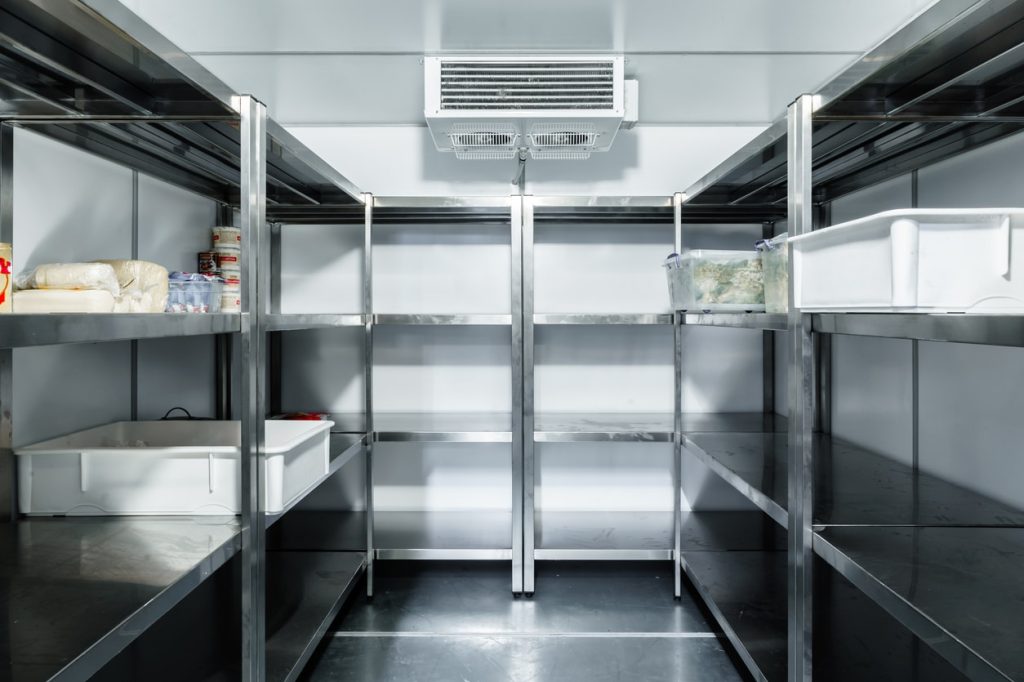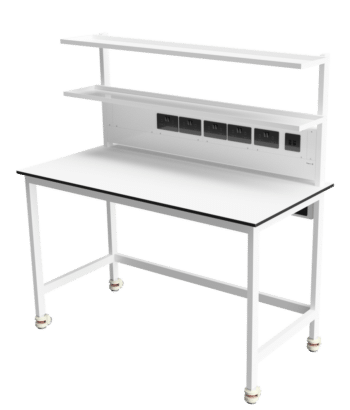Cold rooms, sometimes often referred to as walk-in cold storage, are vital in a wide range of industries, including food storage, pharmaceutical, and laboratory use cases. These temperature-controlled spaces offer a controlled environment, ensuring that specific products or materials remain at the desired low temperatures.
In this comprehensive guide, we’ll explore what cold rooms are, their design considerations, the benefits that they offer, and how to keep them maintained effectively.
What is a cold room?
A cold room is a purpose-built, insulated room designed to maintain a controlled temperature, typically between 0°C and 5°C. These rooms are commonly used for storing perishable items, laboratory specimens, or materials that require a specific temperature range to remain fresh and viable.
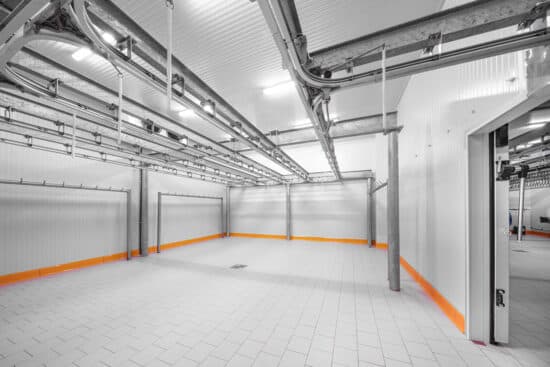
Cold room design
Designing a cold room is a crucial step in ensuring its effectiveness. The design process should take into account several key factors to meet specific your requirements and provide efficient operation:
Insulation: The correct insulation is essential to maintain the desired temperature inside the cold room, energy costs can soar if not insulated properly. Common insulation materials include polyurethane, polystyrene, or mineral wool.
Flooring: The flooring of a cold room must be designed to withstand low temperatures and moisture. It’s usually made from materials like reinforced concrete, which is easy to clean and maintain.
Refrigeration System: The heart of a cold room is its refrigeration system. This system must be designed to meet the required temperature range and provide consistent cooling. It’s essential to consider energy efficiency and reliability when choosing the system.
Shelving and Racking: The interior layout, including shelving and racking, should be designed to maximise storage capacity while allowing efficient access to stored items.
Doors: Cold room doors must be well-insulated and equipped with seals to prevent temperature fluctuations. They should also be sturdy and easy to open and close. Design options include sliding or hinged doors, with this being decided by the space that you can make use of.
Lighting: Lighting inside the cold room should be designed to meet safety and visibility requirements while minimising heat generation. Energy-efficient LED lights are the best option, not only because of their low heat output but also their ability to work efficiently at extreme temperatures.
Designing a cold room requires careful planning and attention to detail. Collaborating with experts in cold room installation, like MTCSS, can help ensure a well-designed and efficient system.
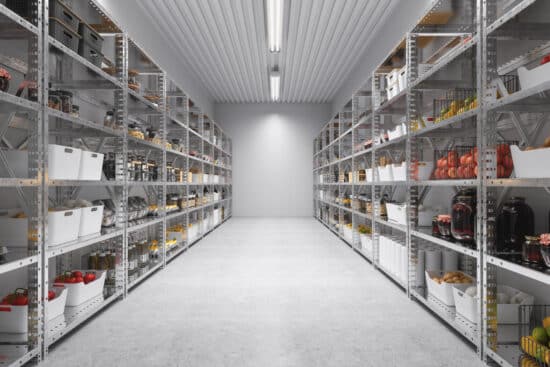
Cold Room Installation
Proper installation is crucial to the long-term performance and reliability of a cold room. A well-executed installation process ensures that the insulation, refrigeration, and all associated components work seamlessly together. Here are some key steps in the installation process:
Site Preparation: Before installation, you should prepare the site, including the construction of a suitable foundation and the installation of necessary utilities.
Assembling Components: The cold room panels, doors, refrigeration units, and other components are assembled according to the design specifications.
Sealing and Insulation: The room is sealed, and insulation is applied to ensure the temperature remains constant.
Refrigeration Installation: The refrigeration system is installed and connected to the electrical supply. Proper calibration and testing ensure that the system operates within the desired temperature range.
Testing and Commissioning: Comprehensive testing is conducted to verify that the cold room functions as intended. This includes temperature control, door seals, and overall efficiency.
Training: To ensure the long-standing safety and efficiency of your cold room, staff should be trained on the operation and maintenance of the room.
It’s essential to work with professionals, like InterFocus, who specialise in cold room installation to ensure a successful and reliable setup.
Benefits of Cold Rooms
Cold rooms offer several advantages across various industries, making them an indispensable asset for numerous applications:
Food Storage: Cold rooms are essential for storing perishable food items, extending their shelf life and preventing spoilage.
Pharmaceuticals: In the pharmaceutical industry, cold rooms are crucial for storing temperature-sensitive medications and vaccines, ensuring their efficacy and safety.
Laboratory Use: Laboratories often require cold rooms to maintain controlled conditions for experiments and specimen storage.
Energy Efficiency: Well-designed cold rooms can be energy-efficient, reducing operational costs over time.
Space Utilisation: Cold rooms maximise space utilisation through their shelving and racking systems, allowing for efficient storage.
Temperature Control: The ability to maintain precise temperature control ensures product quality and safety.
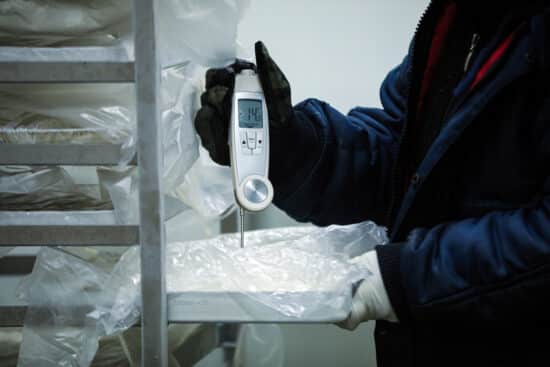
What Can You Store in a Cold Room?
Cold rooms are incredibly versatile spaces that can accommodate a wide range of items, depending on their design and temperature requirements. Here are some examples of what you can store in a cold room:
Food Items: Perishable food products such as fruits and vegetables, dairy, and meat.
Pharmaceuticals: Temperature-sensitive medications, vaccines, and laboratory samples.
Laboratory Specimens: Scientific experiments often require controlled temperature environments.
Chemicals: Some chemicals need to be stored at low temperatures for safety and stability.
Cosmetics: Certain cosmetic products benefit from cold storage to prolong their shelf life.
Floral Storage: Florists use cold rooms to maintain the freshness and longevity of cut flowers.
How Long Can You Store Items in a Cold Room?
The duration for which items can be stored in a cold room depends on various factors, including the specific product, temperature, and the quality of the cold room system.
In general, items that are properly stored can remain in a cold room for extended periods, sometimes weeks or months, without compromising their quality. It’s essential to follow storage guidelines and best practices to ensure the longevity of stored items.
Maintenance and Cleaning
To ensure that your cold room stays at peak performance long past its installation, regular maintenance and cleaning are essential. Here are some maintenance tips and cleaning guidelines:
Regular Inspections: Conduct routine inspections to identify any issues with the insulation, refrigeration system, and seals. Address problems promptly to prevent temperature fluctuations.
Cleaning: A build-up of dirt, debris or mould can compromise the efficiency of your cold room. Regular cleaning can help to mitigate this.
Temperature Calibration: Checking and calibrating the temperature control system ensures that your cold room is being kept at the correct temperature, avoiding overworking the system or allowing the room to reach higher temperatures than desired.
Door Seals: Check and replace door seals as needed to maintain an airtight environment.
Professional Service: Schedule regular professional maintenance and servicing to identify and address any hidden issues. This can also incorporate regularly replacing the air filters in your refrigeration systems.
Cold rooms are indispensable in many industries, offering controlled environments for preserving food, pharmaceuticals, laboratory specimens, and more. Proper design, installation, and maintenance are critical to ensuring their effectiveness and longevity.
Collaborating with experts in cold room installation and maintenance can help you achieve the best results and make the most of these temperature-controlled spaces. Cold rooms provide numerous benefits and are a valuable asset for any business or organisation that requires controlled temperature storage.

